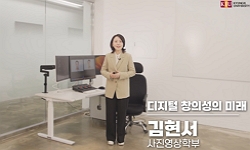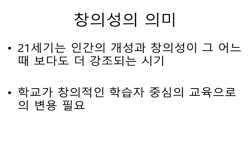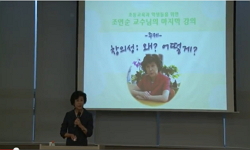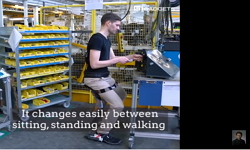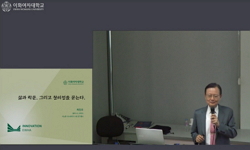발명자, 저작자, 그리고 예술가를 격려하여 그들이 창조하는 과정에 에너지를 투자하도록 지적재산권의 보호가 필요하다. 이런 보호 없이는 다른 사람들이 비용부담과 창조에 대한 노력 없...
http://chineseinput.net/에서 pinyin(병음)방식으로 중국어를 변환할 수 있습니다.
변환된 중국어를 복사하여 사용하시면 됩니다.
- 中文 을 입력하시려면 zhongwen을 입력하시고 space를누르시면됩니다.
- 北京 을 입력하시려면 beijing을 입력하시고 space를 누르시면 됩니다.
https://www.riss.kr/link?id=A99635621
- 저자
- 발행기관
- 학술지명
- 권호사항
-
발행연도
2013
-
작성언어
Korean
- 주제어
-
KDC
360
-
등재정보
KCI등재
-
자료형태
학술저널
-
수록면
221-252(32쪽)
-
KCI 피인용횟수
2
- 제공처
-
0
상세조회 -
0
다운로드
부가정보
국문 초록 (Abstract)
지적재산권의 존재는 발명가들이 그들의 창조적 노력을 추구 할 수 있도록 격려하는 것이다. 만약 발명가에게 자기의 발명을 복사하지 못하도록 하는 법적 권리가 주어진다면 그는 이익을 낼 수 있는 확률이 더 높아진다. 그러므로 그가 연구 및 개발에 초기투자를 더 하고 싶을 것이다. 그렇게 되면 발명가는 더 부유하게 될 뿐만 아니라 지적재산권의 보호 때문에 새롭고 더 좋은 제품들이 만들어져 소비자인 일반 국민들에게 다가 올 것이다. 이러한 법적 논리가 논의되고 연구되어야 하지 않겠는가? 지금까지 한국에서는 단지 외국법의 사례소개는 많았다. 또 우리 실정법의 해석도 많은 연구가 있었다. 그러나 본고에서는 지적재산권보호의 법리적, 철학적, 사회적 기저를 탐구하고자 한다.
지적재산권법의 주된 목적은 기술적이거나 표현적인 측면에서 새롭고 더 나아진 작품을 추구한다는 것이다. 이 목적은 특허, 저작권, 영업비밀(trade secret)뿐만 아니라 다른 특수한 보호시스템들도 포함한다. 한편, Trademark과 부정경쟁방지법들은 아주 다른 측면의 경제적 문제에 초점을 맞춘다. 즉, 시장의 완전성을 지키는 것이다. 우리는 공리주의 이론이 다양한 지적재산보호의 분석과 정당화를 위해 오래 동안 중요한 패러다임을 제공해왔다는 사실을 잘 알고 있다. 그런데 지적재산분야의 경제적 차원들을 검토하기 위해서는 이제 아주 다른 (상반된) 두 요소들을 구별하는 것이 무엇보다도 중요하다. 그것은 경제적 유인의 혜택(economic incentive benefit)과 확산 제한의 비용(cost of limiting diffusion)이다. 하지만 우리나라에서는 지적재산권법 분야에서 그 철학적 기초를 탐구한 연구가 거의 없다. 따라서 이 연구에서는 지적재산권법이 추구하는 철학적 기반을 탐구하고자 한다.
발명자, 저작자, 그리고 예술가를 격려하여 그들이 창조하는 과정에 에너지를 투자하도록 지적재산권의 보호가 필요하다. 이런 보호 없이는 다른 사람들이 비용부담과 창조에 대한 노력 없이 지적재산을 복사하거나 모방할 수 있으므로 원작자들의 적당한 투자수익 획득을 막는 것이다. 물론 카피레프트 운동에 따르면 지적재산권에 반대해 지적 창작물에 대한 권리를 모든 사람이 공유할 수 있도록 하고 있다. 이는 옳은 것인가?
지적재산권의 존재는 발명가들이 그들의 창조적 노력을 추구 할 수 있도록 격려하는 것이다. 만약 발명가에게 자기의 발명을 복사하지 못하도록 하는 법적 권리가 주어진다면 그는 이익을 낼 수 있는 확률이 더 높아진다. 그러므로 그가 연구 및 개발에 초기투자를 더 하고 싶을 것이다. 그렇게 되면 발명가는 더 부유하게 될 뿐만 아니라 지적재산권의 보호 때문에 새롭고 더 좋은 제품들이 만들어져 소비자인 일반 국민들에게 다가 올 것이다. 이러한 법적 논리가 논의되고 연구되어야 하지 않겠는가? 지금까지 한국에서는 단지 외국법의 사례소개는 많았다. 또 우리 실정법의 해석도 많은 연구가 있었다. 그러나 본고에서는 지적재산권보호의 법리적, 철학적, 사회적 기저를 탐구하고자 한다.
지적재산권법의 주된 목적은 기술적이거나 표현적인 측면에서 새롭고 더 나아진 작품을 추구한다는 것이다. 이 목적은 특허, 저작권, 영업비밀(trade secret)뿐만 아니라 다른 특수한 보호시스템들도 포함한다. 한편, Trademark과 부정경쟁방지법들은 아주 다른 측면의 경제적 문제에 초점을 맞춘다. 즉, 시장의 완전성을 지키는 것이다. 우리는 공리주의 이론이 다양한 지적재산보호의 분석과 정당화를 위해 오래 동안 중요한 패러다임을 제공해왔다는 사실을 잘 알고 있다. 그런데 지적재산분야의 경제적 차원들을 검토하기 위해서는 이제 아주 다른 (상반된) 두 요소들을 구별하는 것이 무엇보다도 중요하다. 그것은 경제적 유인의 혜택(economic incentive benefit)과 확산 제한의 비용(cost of limiting diffusion)이다. 하지만 우리나라에서는 지적재산권법 분야에서 그 철학적 기초를 탐구한 연구가 거의 없다. 따라서 이 연구에서는 지적재산권법이 추구하는 철학적 기반을 탐구하고자 한다.
다국어 초록 (Multilingual Abstract)
Through many years of hard work and with a large financial stake, inventor C developed an improved mousetrap. The mousetrap not only caught mice better than competitors but also neatly packaged the dead mice into disposable bags. Consumers would gladly pay more to buy C’s mousetrap than other competitors’ product. The mousetrap soon caught the eyes of Gizmo Inc. whereafter Gizmo copied it and sold it on the market at a steep discount. Gizmo could make a profit because of its minimal research expense and develop costs. In order to keep afloat inventor C had to lower his prices, resulting in C not able to recover his research and development costs and sustaining losses. Even though C many more ideas, he decided it was not worthwhile due to companies such as Gizmo. The goal of intellectual property is to encourage inventors like C to create works. If there was a legal right prohibiting the copying of C’s invention, C chances of making a profit would be higher, thereby, giving him an incentive to invest more in research and development. C not only would be richer but because of the intellectual property protection he would also be able to create more improved products to the consuming public.
Up until now, examples of many foreign cases have been introduced in Korea. Furthermore, much research has been done in interpreting the law. But this paper aims to research the legal, philosophical, and social basis of the protection of intellectual property.
The main objective of intellectual property law, whether technological or expressive, is the creation of new and improved works. This purpose includes not only patents, copyrights, and trade secrets but also different specific protection systems. Meanwhile, trademarks and unfair competition are totally different in respect to that they focus on economic issues. They protect the integrity of the market. The utilitarian theory has provided for some time an important paradigm for analyzing and justifying different kinds of intellectual property protection. But in order to examine the economic perspective of intellectual property, it is imperative to be able to differentiate the two different functions. The two functions are the economic incentive benefit and the cost of limiting diffusion. However, research based on the philosophical foundation is hard to find from the intellectual property law realm in Korea. Therefore, this paper seeks to research the philosophical grounds of intellectual property law.
There must be support and protection of intellectual property for inventors, copyright owners and artists to invest in their creation. Without such protection, others will copy or imitate the works without incurring costs and the effort of creating wo...
There must be support and protection of intellectual property for inventors, copyright owners and artists to invest in their creation. Without such protection, others will copy or imitate the works without incurring costs and the effort of creating works, leaving the original creator with no return on his investment. The copyleft movement is naturally aligned against intellectual property rights and would prefer that all intellectual property rights be free. This begs the question, “does this feel right?” Consider the following example:
Through many years of hard work and with a large financial stake, inventor C developed an improved mousetrap. The mousetrap not only caught mice better than competitors but also neatly packaged the dead mice into disposable bags. Consumers would gladly pay more to buy C’s mousetrap than other competitors’ product. The mousetrap soon caught the eyes of Gizmo Inc. whereafter Gizmo copied it and sold it on the market at a steep discount. Gizmo could make a profit because of its minimal research expense and develop costs. In order to keep afloat inventor C had to lower his prices, resulting in C not able to recover his research and development costs and sustaining losses. Even though C many more ideas, he decided it was not worthwhile due to companies such as Gizmo. The goal of intellectual property is to encourage inventors like C to create works. If there was a legal right prohibiting the copying of C’s invention, C chances of making a profit would be higher, thereby, giving him an incentive to invest more in research and development. C not only would be richer but because of the intellectual property protection he would also be able to create more improved products to the consuming public.
Up until now, examples of many foreign cases have been introduced in Korea. Furthermore, much research has been done in interpreting the law. But this paper aims to research the legal, philosophical, and social basis of the protection of intellectual property.
The main objective of intellectual property law, whether technological or expressive, is the creation of new and improved works. This purpose includes not only patents, copyrights, and trade secrets but also different specific protection systems. Meanwhile, trademarks and unfair competition are totally different in respect to that they focus on economic issues. They protect the integrity of the market. The utilitarian theory has provided for some time an important paradigm for analyzing and justifying different kinds of intellectual property protection. But in order to examine the economic perspective of intellectual property, it is imperative to be able to differentiate the two different functions. The two functions are the economic incentive benefit and the cost of limiting diffusion. However, research based on the philosophical foundation is hard to find from the intellectual property law realm in Korea. Therefore, this paper seeks to research the philosophical grounds of intellectual property law.
목차 (Table of Contents)
- 국문요약
- Ⅰ. 서론
- Ⅱ. 로크의 자연권적 관점에서의 지적재산권
- Ⅲ. 헤겔의 재산권 사상과 개성
- Ⅳ. 자연권사상과 공리주의의 비교 논의
- 국문요약
- Ⅰ. 서론
- Ⅱ. 로크의 자연권적 관점에서의 지적재산권
- Ⅲ. 헤겔의 재산권 사상과 개성
- Ⅳ. 자연권사상과 공리주의의 비교 논의
- Ⅴ. 지적재산권보호의 법리적 논거에 대한 논의
- Ⅵ. 결론
- 참고문헌
- ABSTRACT
참고문헌 (Reference)
1 배대헌, "첨단과학기술의 지적재산권 보호와 그 과제" 과학기술법연구원 11 (11): 121-175, 2006
2 이재성, "직무발명에 관한 연구 : 독일의 종업원발명법을 중심으로" 한남대학교 대학원 2002
3 강동세, "지적재산권의 형사적 이해" 세창출판사 2003
4 장여, "지적재산권의 사법보호(개요)" 서울지방변호사회 (153) : 45-49, 2005
5 최두진, "지적재산권의 보호범위에 관한 연구" 조선대학교 대학원 2010
6 김가희, "지적재산권 보호의 사각지대" 저작권심의조정위원회 (44) : 87-90, 1998
7 송정원, "지적재산권 보호와 경쟁정책에 관한 소고" 한국공정경쟁연합회 32-38, 2004
8 윤기호, "지식정보화 사회에서의 지적재산권보호에 대한 경제적 분석" 정보통신정책연구원 1999
9 특허청, "지식재산이 경제발전에 미치는 영향에 대한 연구" 한국개발연구원 2003
10 손세정, "재산권으로서 지적재산권의 보호와 한계 : 미국법을 중심으로" 동국대학교 비교법문화연구소 9 (9): 219-256, 2009
1 배대헌, "첨단과학기술의 지적재산권 보호와 그 과제" 과학기술법연구원 11 (11): 121-175, 2006
2 이재성, "직무발명에 관한 연구 : 독일의 종업원발명법을 중심으로" 한남대학교 대학원 2002
3 강동세, "지적재산권의 형사적 이해" 세창출판사 2003
4 장여, "지적재산권의 사법보호(개요)" 서울지방변호사회 (153) : 45-49, 2005
5 최두진, "지적재산권의 보호범위에 관한 연구" 조선대학교 대학원 2010
6 김가희, "지적재산권 보호의 사각지대" 저작권심의조정위원회 (44) : 87-90, 1998
7 송정원, "지적재산권 보호와 경쟁정책에 관한 소고" 한국공정경쟁연합회 32-38, 2004
8 윤기호, "지식정보화 사회에서의 지적재산권보호에 대한 경제적 분석" 정보통신정책연구원 1999
9 특허청, "지식재산이 경제발전에 미치는 영향에 대한 연구" 한국개발연구원 2003
10 손세정, "재산권으로서 지적재산권의 보호와 한계 : 미국법을 중심으로" 동국대학교 비교법문화연구소 9 (9): 219-256, 2009
11 Roberta Kwall, "“Author-Stories”: Narrative’s Implications for Moral Rights and Copyright’s Joint Authorship Doctrine" 75 : 1-, 2001
12 Peter Jaszi, "Toward a Theory of Copyright: The Metamorphoses of “Authorship,“" 45-, 1991
13 Lawrence B. Becker, "Too Much Property" 21 : 196-206, 1992
14 Andrew A. Lipscomb, "The Writings of Thomas Jefferson, Vol. 13" letter from Thomas Jefferson to Isaac McPherson 333-335, 1905
15 Thorstein Veblen, "The Theory of the Leisure Class: An Economic Study of Institutions" 1899
16 Steven Weber, "The Success of Open Source" 2004
17 George A. Ackerlof, "The Market for “Lemons”: Quality Uncertainty and the Market Mechanism" 84 : 488-, 1970
18 Ronald H. Coase, "The Lighthouse in Economics, in The Firm, the Market, and the Law" 1988
19 David McGowan, "The Legal Implications of Open Source Software" 241-, 2001
20 William M. Landes, "The Economic Structure of Intellectual Property Law" 2003
21 Mak, "Steamboats and the Great Productivity—Surge in River Transportation" 32 : 619-625, 1972
22 Suzanne Scotchmer, "Standing on the Shoulders of Giants: Cumulative Research and the Parent Law" 5 : 29-, 1991
23 Alfred Yen, "Restoring the Natural Law: Copyright as Labor and Possession" 5 : 517-, 1990
24 Mark A. Lemley, "Property, Intellectual Property, and Free Riding" 83 (83): 1031-1033, 2005
25 Margaret Jane Radin, "Property and Personhood" 34 : 957-, 1982
26 Paul David, "New Technology, Diffusion, Public Policy, send Industrial Competitiveness" Center for Economic Policy Research 1985
27 David Gauthier, "Morals by Agreement" 190-232, 1986
28 Margaret Jane Radio, "Market-Inalinenability" 100 : 1849-, 1987
29 M. Kamien, "Market Structure and Innownon"
30 Edwin C. Hettiuger, "Justifying Intellectual Property" 18 : 31-, 1989
31 Peter S. Menell, "Intellectual Property: General Theories, Encyclopedia of Law and Economics" 2000
32 Peter S. Menell, "Intellectual Property, in Handbook of Law and Economics" 2007
33 F. M. Scherer, "Industrial Market Structure and Economic Performance" 445-455, 1980
34 Nordhaus W., Invention, "Growth, land Welfare: A Theoretical Treatment of Technological Change" 3-7, 1969
35 Lawrence Lessig, "Free Culture: How Big Media Uses Technology and the Law to Lock Down Culture and Control Creativity" Penguin Press 2004
36 Natlian Rosenberg, "Factors Affecting the Diffusion of Technology" 10 : 3-, 1972
37 Jeremy Waldron, "Enough and as Good Left for Others" 29 : 319-, 1979
38 Kenneth I. Arrow, "Economic Welfare and the Allocation of Resources for Invention, in The Rate and Direction of Inventive Activity: Economic and Social Factors" Nat’l Bureau of A Economic Research 614-616, 1962
39 Robert Shapiro, "Economic Effects of Intellectual Property-Intensive Manufacturing in the United States" 2007
40 Lawrence C. Becker, "Deserving to Own Intellectual Property" 68 : 609-, 1993
41 Neil W. Netanel, "Copyright Alienability Restrictions and the Enhancement of Author Autonomy: A Normative Evaluation" 24 : 347-, 1993
42 Steven Cherensky, "Comment, A Penny for Their Thoughts: Employee-Inventors, Pre-invention Assignment Agreements, Property, and Personhood" 81 : 595-641, 1993
43 Yochai Benkler, "Coase’s Penguin, or Linux and the Nature of the Firm" 112 : 369-, 2002
44 Robert Nozick, "Anarchy, State and Utopia" 175-182, 1984
45 Richard Nelson, "An Evolutionary Theory of Economic Change" 1982
46 James Boyle, "A Theory of Law and Information: Copyright, Spleens, Blackmail and Insider Trading" 80 : 1413-, 1992
47 Wendy J. Gordon, "A Property Right in Self-Expression: Equality and Individualism in the Natural Law of Intellectual Property" 102 : 1533-, 1993
동일학술지(권/호) 다른 논문
-
- 한국법학회
- 손윤석(Son, Youn-Suk)
- 2013
- KCI등재
-
상호저축은행의 부실경영에 대한 경영진의 상사책임과 형사책임
- 한국법학회
- 정대(Chung, Dae)
- 2013
- KCI등재
-
- 한국법학회
- 조한상(Cho, Han-Sang)
- 2013
- KCI등재
-
- 한국법학회
- 김상찬(Kim, Sang-Chan)
- 2013
- KCI등재
분석정보
인용정보 인용지수 설명보기
학술지 이력
| 연월일 | 이력구분 | 이력상세 | 등재구분 |
|---|---|---|---|
| 2026 | 평가예정 | 재인증평가 신청대상 (재인증) | |
| 2020-01-01 | 평가 | 등재학술지 유지 (재인증) |  |
| 2017-01-01 | 평가 | 등재학술지 유지 (계속평가) |  |
| 2013-01-01 | 평가 | 등재학술지 유지 (등재유지) |  |
| 2011-09-14 | 학술지명변경 | 외국어명 : Korean Law Review -> Law Review |  |
| 2010-01-01 | 평가 | 등재학술지 유지 (등재유지) |  |
| 2007-01-01 | 평가 | 등재학술지 선정 (등재후보2차) |  |
| 2006-07-10 | 학술지명변경 | 외국어명 : Law Review -> Korean Law Review |  |
| 2006-01-01 | 평가 | 등재후보 1차 PASS (등재후보1차) |  |
| 2005-05-30 | 학술지명변경 | 한글명 : 法學硏究 -> 법학연구 |  |
| 2005-01-01 | 평가 | 등재후보학술지 유지 (등재후보1차) |  |
| 2004-01-01 | 평가 | 등재후보 1차 FAIL (등재후보1차) |  |
| 2003-01-01 | 평가 | 등재후보학술지 선정 (신규평가) |  |
학술지 인용정보
| 기준연도 | WOS-KCI 통합IF(2년) | KCIF(2년) | KCIF(3년) |
|---|---|---|---|
| 2016 | 1.02 | 1.02 | 1.05 |
| KCIF(4년) | KCIF(5년) | 중심성지수(3년) | 즉시성지수 |
| 1.07 | 1.02 | 1.083 | 0.19 |




 DBpia
DBpia